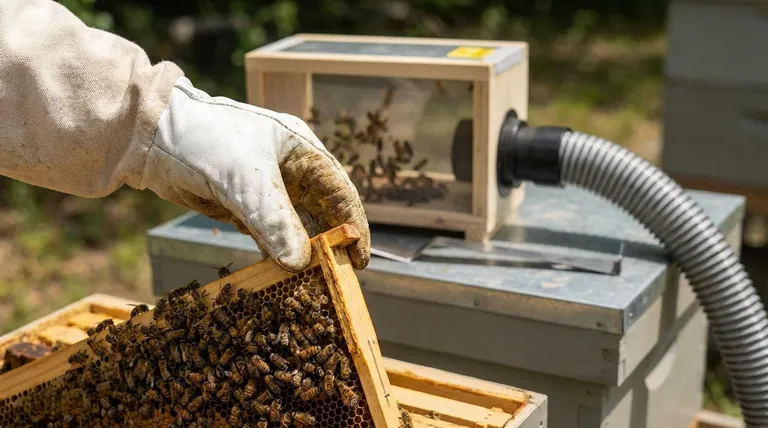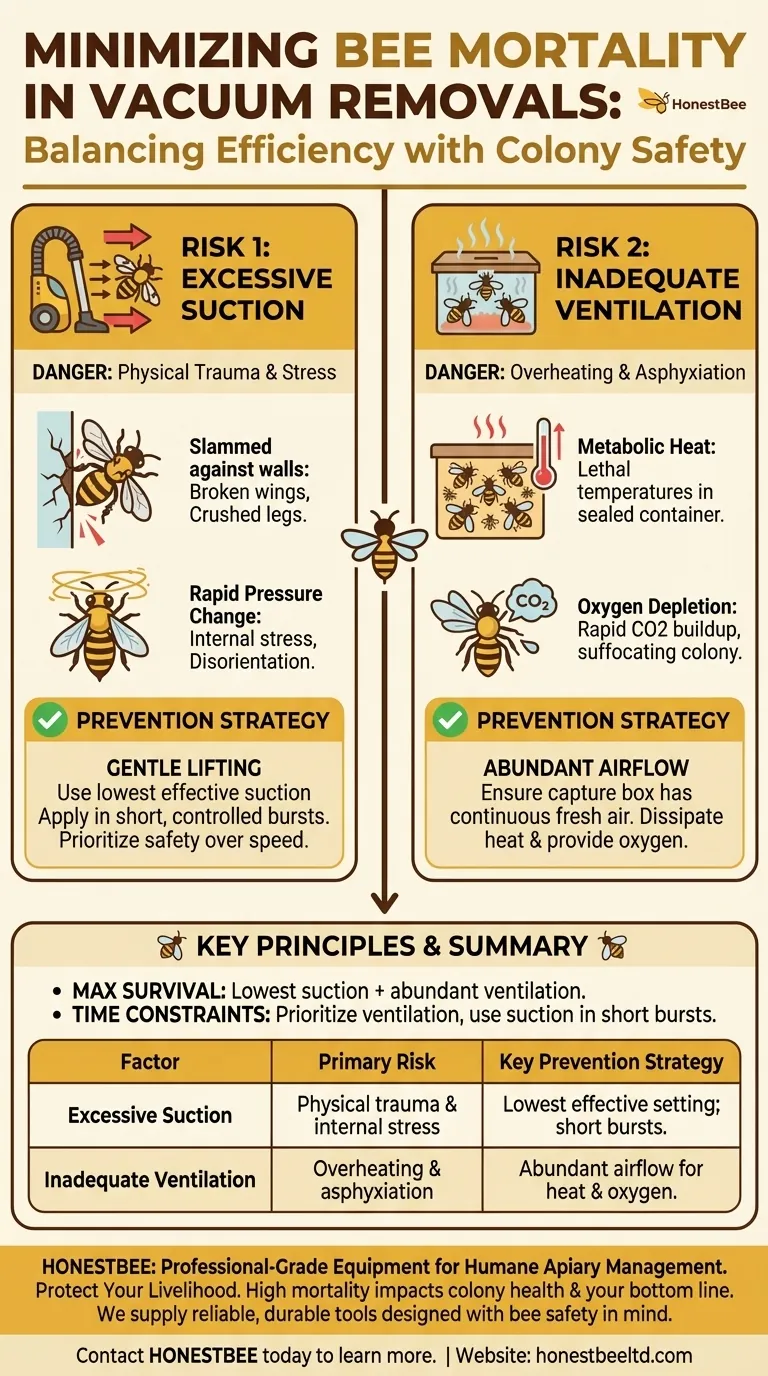The two primary factors that dramatically increase bee mortality when using a bee vacuum are excessive suction power and inadequate ventilation in the capture chamber. Using too much force can cause severe physical trauma to the bees, while poor airflow can lead to rapid overheating and asphyxiation.
The core challenge of using a bee vacuum is balancing the efficiency of removal against the fragility of the bees. Success isn't just about capturing the colony; it's about capturing it alive and healthy.

The Danger of Excessive Suction
A bee vacuum is a tool of force, and applying that force improperly is the fastest way to harm the colony. The goal is to gently lift the bees, not to violently pull them.
Physical Trauma
Bees are delicate. When the suction is too high, the air velocity inside the hose becomes dangerous.
Bees are slammed against the walls of the hose and the capture box, leading to broken wings, crushed legs, and other fatal injuries. Even non-lethal damage can prevent a bee from contributing to the colony later.
Internal Stress and Disorientation
The rapid pressure change from the hive environment to the low-pressure vacuum hose can cause significant stress. While a well-designed system minimizes this, extreme suction exacerbates the shock, leaving bees disoriented and weakened.
The Critical Role of Ventilation
Capturing the bees is only half the battle. Keeping them alive inside the capture box depends entirely on the environment you create.
Preventing Overheating
A large cluster of bees generates a significant amount of metabolic heat. In a poorly ventilated or sealed container, the temperature can rise to lethal levels in a surprisingly short time.
Proper ventilation allows this heat to dissipate, keeping the bees at a stable and safe temperature.
Avoiding Asphyxiation
Like any living creature, bees require a constant supply of fresh oxygen to survive. Thousands of bees in a sealed container will quickly consume the available oxygen and build up toxic levels of carbon dioxide.
A well-ventilated capture box ensures a continuous flow of fresh air, preventing the colony from suffocating.
Understanding the Inherent Risks
Even with a perfectly calibrated system, a bee vacuum is an inherently stressful experience for a colony. A small percentage of bees may not survive.
The Trade-off: Speed vs. Safety
A more powerful vacuum can remove a colony from a structure faster, but this speed comes at the cost of higher risk to the bees.
Conversely, using lower suction is far safer for the bees but requires more time and patience from the operator. The most responsible approach always prioritizes the safety of the colony.
The Operator's Responsibility
The tool itself is neutral; the outcome is determined by the skill of the person using it. It is the operator's responsibility to understand these principles and adjust their equipment and technique to ensure the highest possible survival rate.
Key Principles for Minimizing Bee Mortality
Your approach should be dictated by your primary goal: preserving the colony's health.
- If your primary focus is maximum bee survival: Use the lowest possible suction setting that will effectively lift the bees and ensure your capture box has abundant ventilation.
- If you must work under time constraints: Prioritize ventilation above all else, and use suction in short, controlled bursts rather than continuous application to minimize stress.
Mastering these factors is the difference between performing a rescue and causing a disaster.
Summary Table:
| Factor | Primary Risk | Key Prevention Strategy |
|---|---|---|
| Excessive Suction | Physical trauma (broken wings, legs) and internal stress. | Use the lowest effective suction setting; apply in short bursts. |
| Inadequate Ventilation | Overheating and asphyxiation from CO2 buildup. | Ensure the capture box has abundant airflow to dissipate heat and provide oxygen. |
Protect Your Livelihood and Your Bees. As a commercial beekeeper or distributor, every bee counts. High mortality rates during removal can impact colony health and your bottom line. HONESTBEE supplies professional-grade beekeeping equipment designed with bee safety in mind. Our wholesale-focused operations ensure you get the reliable, durable tools you need for efficient and humane apiary management.
Let's discuss how our equipment can help you minimize bee mortality. Contact HONESTBEE today to learn more about our products and wholesale pricing.
Visual Guide

Related Products
- HONESTBEE Professional Long Handled Hive Tool with Precision Cutting Blade
- HONESTBEE Advanced Ergonomic Stainless Steel Hive Tool for Beekeeping
- Professional Dual-End Stainless Steel Hive Tool for Beekeeping
- Wholesales Dadant Size Wooden Bee Hives for Beekeeping
- Professional 3-Bar Frame Grip with Integrated Hive Tool
People Also Ask
- How should beekeepers handle bees when using a hive tool? Master Calm, Deliberate Techniques
- What is the hive tool used for? The Essential Multi-Tool for Every Beekeeper
- What are the features of a regular hive tool? The Essential Multi-Tool for Every Beekeeper
- What tools are used for cleaning frames? A Beekeeper's Simple 4-Tool Guide
- How can a hive tool be used to remove propolis and burr comb? Master Hive Maintenance for a Healthy Colony



















